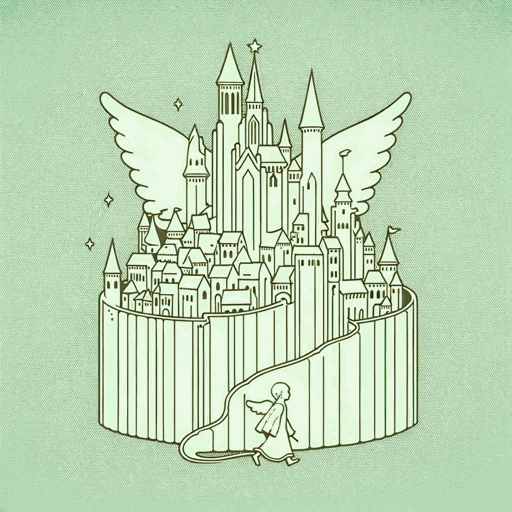46 pages • 1 hour read
Mark TwainThe Mysterious Stranger
Fiction | Novel | Adult | Published in 1916A modern alternative to SparkNotes and CliffsNotes, SuperSummary offers high-quality Study Guides with detailed chapter summaries and analysis of major themes, characters, and more.
Symbols & Motifs
The Villagers
The members of Eseldorf can be interpreted as a stand-in for humanity as a whole. Considering Satan’s cosmic point of view, the description of the villagers as a monolith allows the reader to watch his claims about the human race play out on a smaller scale. To some readers, this will be apparent from the moment they hear the town’s name: Eseldorf is German for “ass town.” The blunders readers observe amongst villagers always have parallels to large-scale conflicts.
One of Satan’s primary criticisms of humanity is its tendency to blindly follow the loudest voices. This idea is introduced early in the book. Even though Father Peter is widely beloved, the town refuses to stand up for him when the astrologer spreads false rumors about the content of his sermons. This conflict intensifies when they increase the frequency of their witch hunting. Even though the astrologer was possessed at the time, the witch commission refuses to investigate him, choosing instead to focus on the “poor and friendless” (85). Since the astrologer is widely feared amongst the townspeople, they cannot bring themselves to persecute him. However, they will happily satiate their desires by hunting those who cannot defend themselves.
Related Titles
By Mark Twain

A Connecticut Yankee in King Arthur's Court
Mark Twain

A True Story
Mark Twain

Letters from the Earth
Mark Twain

Life on the Mississippi
Mark Twain

Roughing It
Mark Twain

The Adventures of Huckleberry Finn
Mark Twain

The Adventures of Tom Sawyer
Mark Twain

The Autobiography of Mark Twain
Mark Twain

The Celebrated Jumping Frog of Calaveras County
Mark Twain

The Gilded Age: A Tale of Today
Mark Twain, Charles Dudley Warner

The Innocents Abroad
Mark Twain

The Invalid's Story
Mark Twain

The Man That Corrupted Hadleyburg
Mark Twain

The Prince and the Pauper
Mark Twain

The Tragedy of Pudd'nhead Wilson
Mark Twain

The War Prayer
Mark Twain

